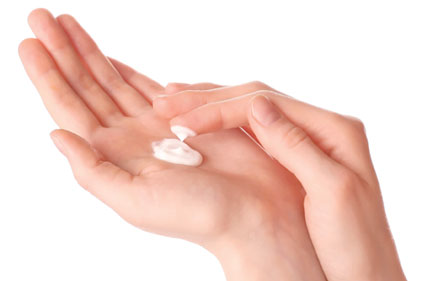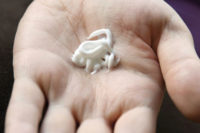The skin is the largest organ of the body, accounting for more than 10 percent of body mass.2 Skin has many important functions, such as providing a defensive shield from bacteria and housing nerves which respond to touch and temperature.
According to the NORA Dermal Exposure Research Program (DERP) of the National Institute for Occupational Safety & Health (NIOSH), more than 13 million workers in the United States are potentially exposed to chemicals that can be absorbed through the skin.3 Dermal exposure to hazardous agents can result in a variety of occupational diseases and disorders, including occupational skin diseases (OSD) and systemic toxicity.4 Those hazards can cause numerous skin irritations, ranging from simple dry skin to more advanced, painful and, ultimately, costly conditions such as dermatitis.
Many workers consider cracked or dry skin simply part of the job. But cracked, rashy skin can be cause for serious concern if harmful substances are able to more easily penetrate the skin’s compromised outer layer. Proactively addressing this critical aspect of workplace safety can reduce injuries and lost work time while contributing to a healthier, more productive workforce. One effective way to address skin health is by providing proper pre-work (barrier) creams.
Benefits of barrier creams
While pre-work creams have been government mandated in Europe and other countries such as Brazil and Russia for years as part of a skin health program, here in the U.S., employers are only required to provide UV protective products to their workers. Perhaps the closest to an endorsement for pre-work skin care products can be found in OSHA’s safety and health best practices manual on metalworking fluids, where it is stated that “barrier creams may be useful for some employees (NIOSH 1998a).”5
Let us state clearly that the best protection from workplace hazards is to always to prevent contact in the first stage and wear the proper personal protective equipment recommended by your safety department in the second stage, when contact is unavoidable. Pre-work (barrier) creams should be used as a supplement to PPE, or in situations where gloves are not an option — e.g., due to the risk of getting caught in machinery or because they do not allow sufficient dexterity. Here, a before-work cream should be used to help maintain the integrity of the outer skin layer.
Anyone who has worn gloves, from latex to leather, has experienced the sweaty, slick feeling of your hands as heat builds up and leeches moisture from your skin. Once the PPE is removed, the moisture dries and your skin feels tight and perhaps itchy. This is known as attrition dermatosis. Applying a pre-work cream with astringent properties will help prevent that excessive loss of moisture.
Base cream selection should be based on an appropriate hazard assessment, taking into account the nature of the work environment. All purpose creams usually do not help. A hazard-specific product, backed by efficacy studies, is the key to starting your skin care program off right. Once identified, the appropriate before work creams should be dispensed from a location that can be easily accessed. Small, portable, sample-size “squeeze tubes” tend to get misplaced. A wall-mounted dispenser near the wash-up area or locker room is preferable, as it allows more visible compliance.
Don’t dismiss dermatitis
Proper skin care can actually impact the bottom line of your business. Employers who do not consider the possibility that dermatitis may occur at their workplace could be making a very costly mistake. Results provided in a recent study published in the Archives of Dermatology of the American Medical Association clearly demonstrate the significant financial impact to business that occupational dermatitis claims represent.6 Contact dermatitis alone has estimated annual costs exceeding one billion dollars.7
References
1 http://dermatology.about.com/cs/skinanatomy/a/anatomy.htm
2 http://www.cdc.gove/niosh/topics/skin/ “Skin Exposures & Effects”
3 http://www.cdc.gov/niosh/topics/skin/skinresearch.html. NORA Dermal Exposure Research program (DERP).
4 http://www.cdc.gove/niosh/topics/skin/ “Skin Exposures & Effects”
5 http://www.osha.gov/SLTC/metalworkingfluids/metalworkingfluids_manual.html
6 http://archderm.ama-assn.org/cgi/content/full/141/6/713 Archives of Dermatology, Vol 141, June 2005, “Incidence Rates, Costs, Severity, and Work-Related Factors of Occupational Dermatitis,” Brian P. McCall, PhD; Irwin B. Horwitz, PhD; Steve R. Feldman, MD, PhD; Rajesh Balkrishnan, PhD., p. 715.
7 http://www.cdc.gove/niosh/topics/skin/ “Skin Exposures & Effects”


